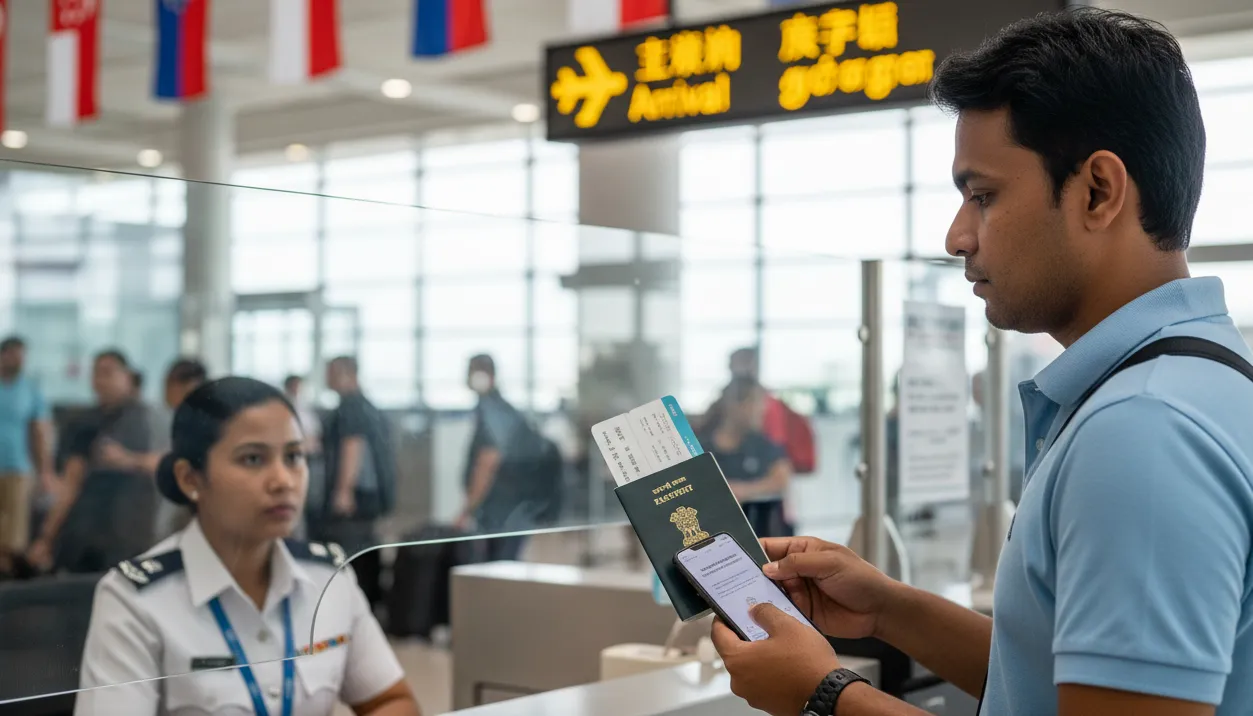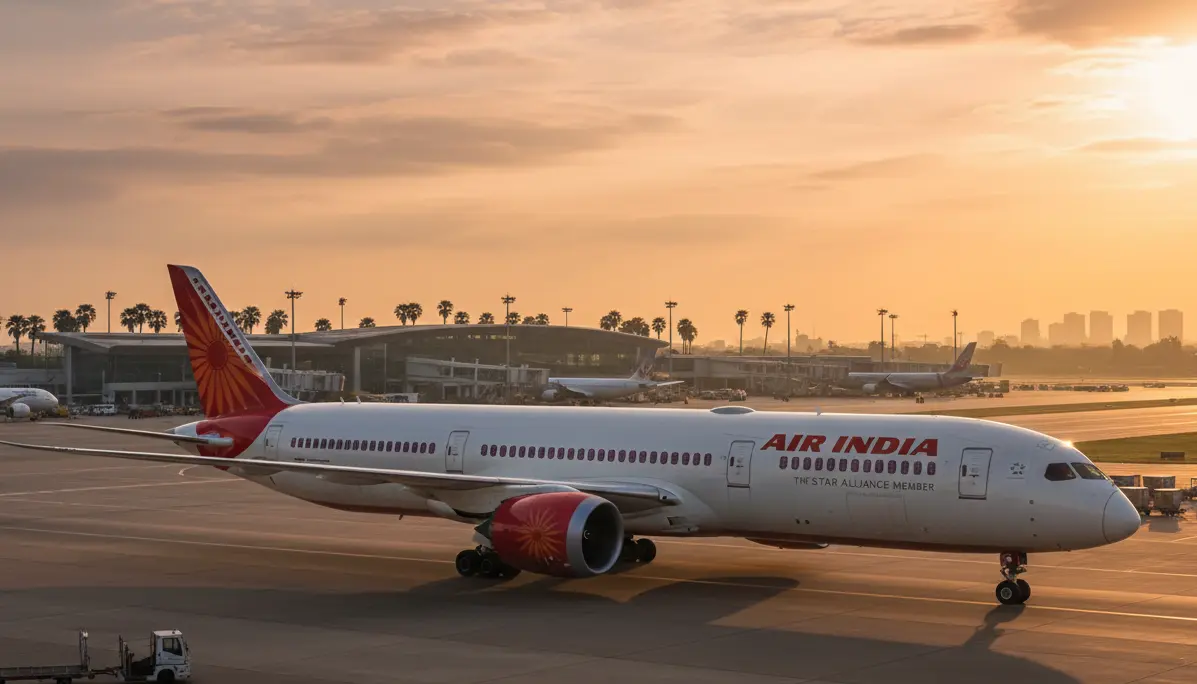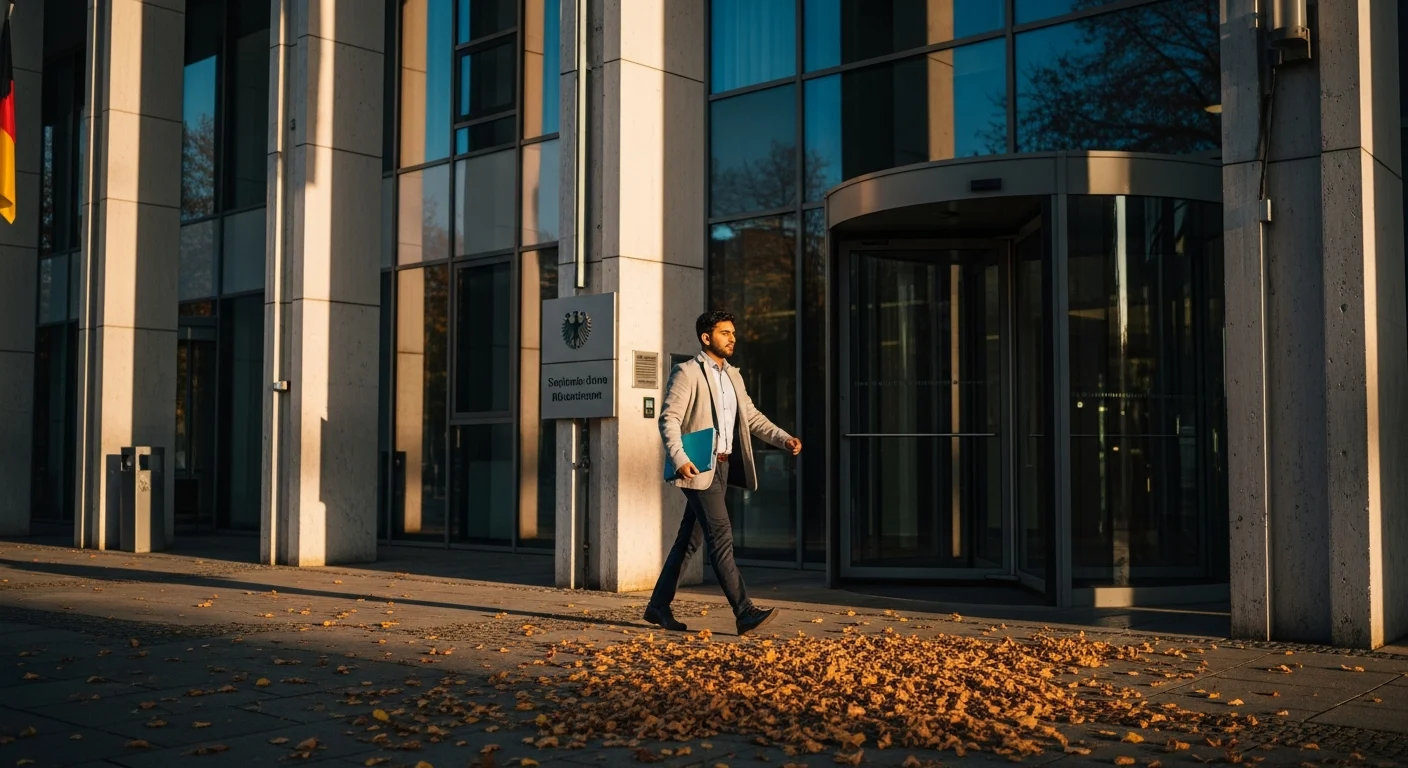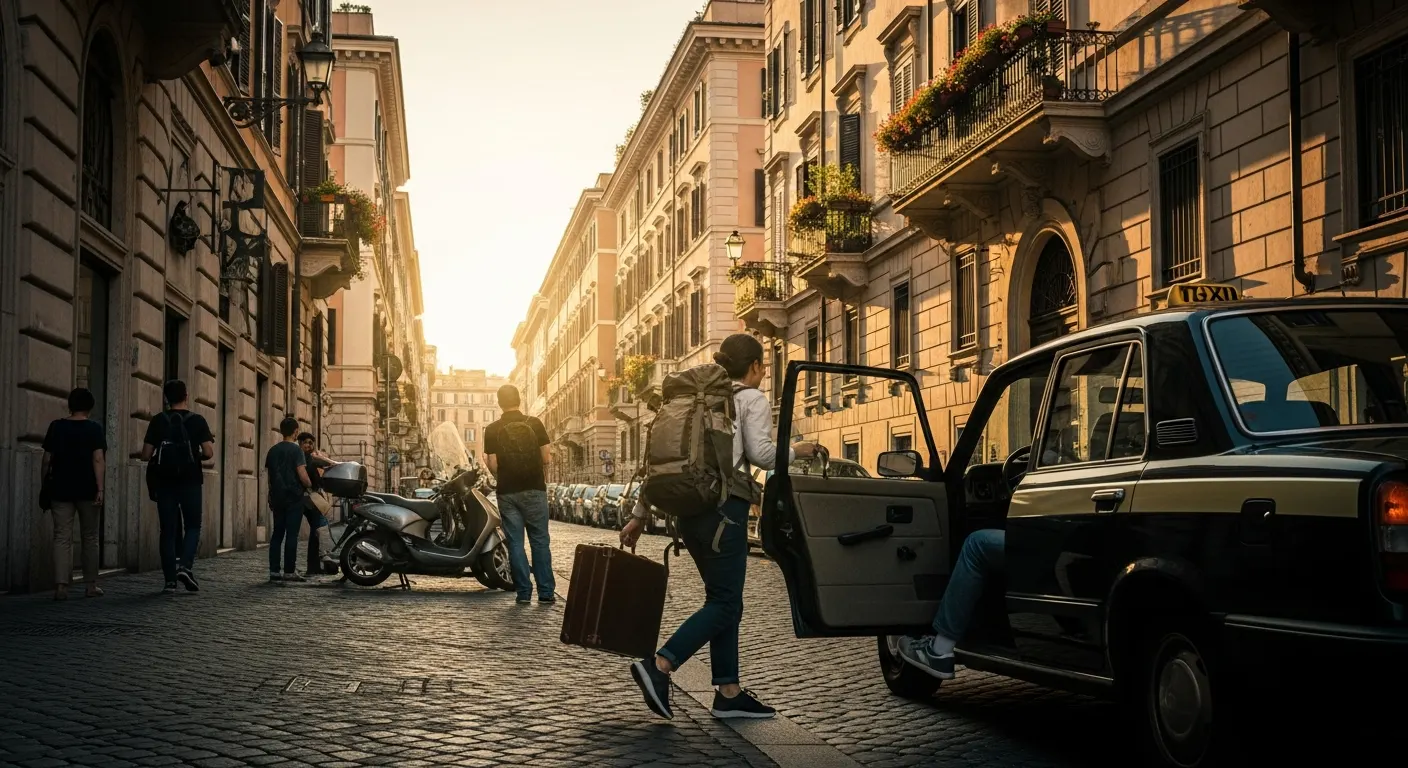Onward Ticket for Singapore from India — Must-Know Rules Before You Fly
Singapore is close and easy from India, but the onward ticket rule still trips people up. You might have a return in mind, a side trip to Kuala Lumpur, or a plan to sort things out later. Airline staff and immigration do not work on vibes. They look for proof that you will leave. If you cannot show it on the spot, you risk being denied boarding or paying a costly last-minute fee. A reliable dummy ticket can provide that instant proof without committing to full fares.
We’ve helped students, first-timers, families, and digital nomads clear this smoothly. You do not need tricks. You need a plan that fits. In this guide, we cover what counts as proof, options from India, and how to choose fast. We will make the onward ticket the easiest part of your trip. For more visa tips tailored for Indians, check our blogs. Secure your visa file now—start your dummy ticket booking in minutes. Learn about our service on the About Us page.
An onward ticket for Singapore is a mandatory proof of exit required for Indian travelers entering on a tourist or short-term visit visa. It shows Singapore immigration that you have confirmed plans to leave the country before your visa expires. Instead of buying an expensive refundable ticket, Indian visitors can use a verifiable dummy ticket with a real Passenger Name Record (PNR). DummyFlights.com provides instant onward tickets accepted by airlines and border authorities, ensuring full compliance with ICA Singapore immigration regulations and stress-free entry approval.
Last updated: October 2025 — verified against ICA Singapore and Indian traveler documentation guidelines.
Table of Contents
Onward Ticket Basics For Singapore: What It Means And Why Indians Get Asked
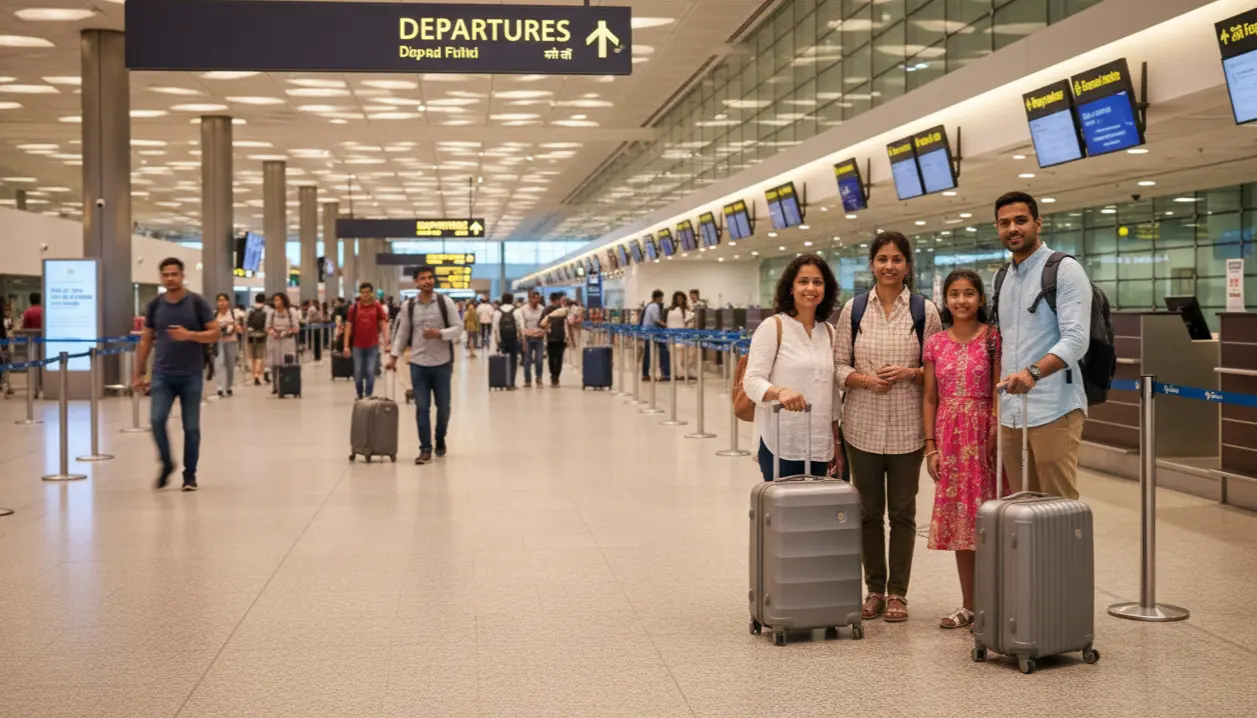
An onward ticket shows you will leave Singapore for any other country. A return ticket brings you back to India. Both prove the same thing to the staff. You plan to exit within your allowed stay. If you are flying from Delhi to Singapore with a later flight to Kuala Lumpur, that is onward. If you are flying from Mumbai to Singapore and back to Mumbai, that is a return. Either one usually works.
Choose the version that matches your real plan. If you want flexibility after Singapore, book onward to a hub like Kuala Lumpur or Bangkok. If you want a clean loop, take a round trip to India. Need flexible dates without paying in full? Just book a dummy ticket and adjust later. This approach is especially useful during peak seasons when real bookings get expensive.
Where Checks Actually Happen From India
You may get asked more than once. That is normal. Here is where it shows up:
-
Airline check-in at your Indian airport.
-
Transit desk, if you have a connection.
-
At the boarding gate during final document review.
-
Arrival control in Singapore if the officer wants to see proof.
Keep the ticket on your phone and one print in your passport folder. The fastest check is the one you are ready for. For detailed airport procedures, refer to the IATA guidelines.
Why Airlines And Immigration Care
Airlines are on the hook if you are refused entry. They pay to fly you back and can face fines. That is why staff in India verify that you will exit. Officers in Singapore have a different job. They manage risk. They look for intent to overstay or work without permission. A clear onward plan lowers that risk. Simple. To avoid fines, many opt for a quick dummy ticket solution.
How Indian Itineraries Fit The Rule
Most trips are from India to Singapore and back. Think Bengaluru to Singapore for five days, then the same carrier home. This is the least questioned pattern.
Many travelers pair Singapore with a quick hop. For example, Chennai to Singapore, three nights in the city, then a short flight to Penang or a ferry to Batam. Those onward legs count, as long as they have your name, a date, and a paid status. Expanding on this, consider how seasonal festivals like Diwali influence routes—book early to secure affordable options.
Some of you move for study or work. You might enter on a one-way while your pass is in process. You can still be asked for onward proof. A tentatively dated ticket to a nearby country, or a flexible return to India, keeps the conversation simple until your long-term pass is issued. For students, integrating a dummy ticket ensures compliance without financial strain.
Who Gets Asked More Often
Not everyone gets the same level of scrutiny. Risk varies with your story and your documents.
-
First-time international travelers with a one-way ticket.
-
Solo backpackers with very long stays.
-
Mismatched records, like a hotel for three nights and an onward after thirty.
-
Name or date typos on tickets.
Families with clear round-trip get asked less. Frequent flyers who present tidy files get waved through quickly. During holiday peaks from India, checks feel stricter because queues are long and staff use a tighter checklist. A consistent, believable plan beats nerves every time. Pro tip: Use tools from our blogs to align your itinerary perfectly.
What Counts As Solid Proof
Aim for confirmations that are easy to verify.
-
A paid flight ticket with a PNR and date. PDF or email is fine.
-
A bus or train out of Singapore into Malaysia with your name and seat.
-
A ferry booking to Batam or Bintan with a barcode and sailing time.
-
A cruise ticket that shows embarkation and the first port after Singapore.
You can also use multi-city plans. For example, Kolkata to Singapore, then onward from Kuala Lumpur to India. That works, provided the onward date makes sense with your stay. Group bookings are fine as well, but make sure each member can show their segment if asked separately. Adding a dummy ticket layer ensures all segments are verifiable instantly.
How Long Should Your Stay Look On Paper
Tourist trips often run three to ten days. A return inside that window feels normal. Longer is fine if your bookings support it. If your onward is far out, officers may ask for more context. Show your hotel chain of bookings, rough day plan, and funds. Keep it simple. A mismatch is what triggers follow-up questions. For example, a two-night hotel with a thirty-day gap to onward looks odd. Fix the optics by aligning dates and keeping proofs consistent. For extended stays, a flexible dummy ticket allows adjustments without hassle.
India First: Payment And Access Tricks
Buy in rupees when possible and lock seats early for school holidays. Keep your international card enabled before you reach the airport. Save all PDFs to a phone folder and to a cloud drive with offline access. Airport Wi Fi is not a plan. Your phone should open the files in two taps. Explore payment options in our FAQ for seamless transactions.
Myths That Keep Circulating
You may hear that nobody checks on arrival. That is not true. Many people pass without a question, but checks do happen based on risk. You will not know in advance. Prepare once and stop guessing.
Transit passengers think they are exempt. Usually, you are fine if you remain airside and have a through ticket. If you booked separate tickets or need to clear immigration to switch terminals or airlines, onward proof can still come up at the first check-in counter in India.
A hotel booking alone is not enough. It shows where you will sleep. It does not show how you will leave. Staff look for a dated exit plan. Give them that. Debunking more myths? Our About Us page shares real stories.
Making It Friction Free
Treat onward proof like your boarding pass. You do not argue the rule. You present the document and move on. Use short answers.
-
Here is my return on 14 February.
-
Here is my flight to Kuala Lumpur next Tuesday.
-
Here is my ferry to Batam after four nights.
When your story and your files match, the check takes seconds. That is the goal. To enhance this, incorporate a dummy ticket for foolproof presentation.
Quick Examples That Work From India
-
Delhi to Singapore, return to Delhi in six days.
-
Mumbai to Singapore, onward to Phuket after three nights.
-
Chennai to Singapore, ferry to Batam on day four, flight back to India from Jakarta.
-
Hyderabad to Singapore on a one way for studies, flexible onward placeholder within 30 days until the pass is issued.
Use what fits your plan. Keep it clean and believable. Then focus on food, gardens, and family time, not paperwork. For more examples, dive into our blogs.
Your Playbook: Real Ways Indians Can Show Onward Travel Proof Without Stress
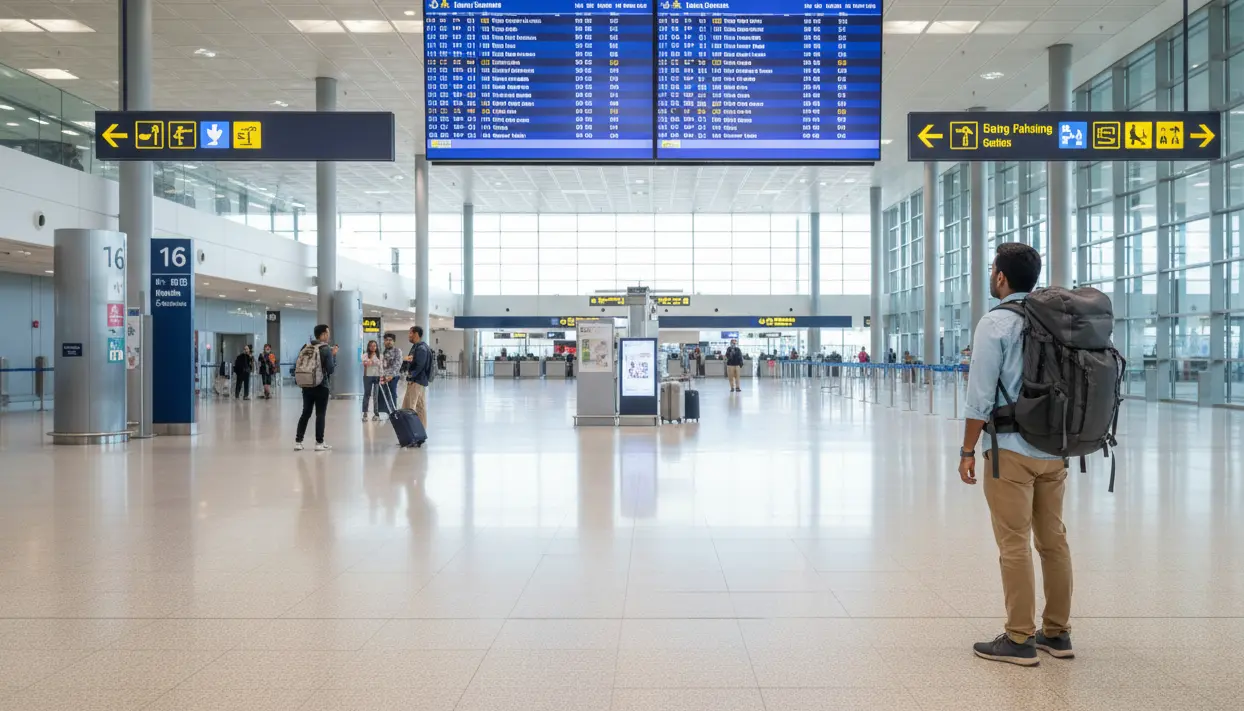
Option 1: Round-Trip And Relax
If your dates are set, book a return and move on. It is the most airline-friendly proof. Staff see a clear loop and wave you through.
Pros are simple. Strong proof. Easy to show. Usually, the best price is when you plan early.
Cons are about flexibility. Change fees can bite if your plans move. Some sale fares do not allow date changes at all.
From India, prices swing by city and season. Delhi and Mumbai see more seats and more sales. Bengaluru and Chennai are solid for tech and family travel flows. Hyderabad and Kolkata can be pricier on peak weekends. If you are eyeing school holidays, book six to eight weeks early. For off-peak weeks, four to six weeks often hit the sweet spot. Watch for weekday departures. Tuesday and Wednesday are usually kinder to your wallet. To compare fares, our FAQ has handy tips.
Option 2: Flex Tickets Done Right
Flexible or refundable sounds safe. Many travelers still get caught by the fine print. Read the rules line by line before you pay.
Refundable can mean different things. Fully refundable without fee. Refundable with a fee. Or refundable to airline credit only. Flex often means free date change once, but the fare difference applies. A hold is a time-limited reservation you must pay to ticket. A 24-hour cancel is a grace period. Some airlines offer it only on their own website and only for certain markets.
Use a simple workflow.
Set a reminder for the last free change or cancel moment.
Save screenshots of the fare rules at checkout.
Store the PNR and receipt PDFs together.
If you cancel, track the refund back to your Indian card or bank. Timelines vary.
Sometimes, premium economy or a higher fare bucket is smarter. The ticket costs more upfront. Yet the change fee is zero or minimal. If your dates are still moving, that can be cheaper than a rock-bottom economy fare plus a heavy change penalty. For flexible options without the premium, consider a dummy ticket instead.
Option 3: Low-Cost “Plan B” Tickets
You can buy a cheap onward to a nearby hub. Kuala Lumpur, Bangkok, Penang, Phuket, or Bali work. So do short hops to Batam or Bintan by ferry plus a later flight.
Pros are clear. Low cost. Fast to book. Clean proof with a PNR and date.
Cons matter. These tickets are usually non-refundable. If you check a bag on separate tickets, your risk goes up. You must collect the bag in Singapore and recheck. That can require clearing immigration. If your intent is only to show proof, keep the onward a day or two after arrival. Do not force a risky same-day connection on separate PNRs unless you plan and pad time.
Know the LCC reality at Changi. Terminal 4 often handles low-cost carriers. Transfers between terminals take time. With separate bookings, no one protects against your misconnect. If you intend to fly that onward, leave a big buffer. A dummy ticket bypasses these risks entirely for proof purposes.
Option 4: Buses, Ferries, Or Cruises As Proof
Land or sea works if the confirmation is solid. Your name must show. The date must be clear. The ticket should be paid.
Buses and trains to Johor are reliable proof when booked on known platforms. Officers look for a scannable code or booking reference. Payments from India are usually fine with international cards. UPI on foreign sites is still inconsistent. Screenshots are not enough. Carry the PDF and the payment receipt.
Ferries to Batam or Bintan are common for weekenders. The booking email plus the PDF ticket convinces staff at the Indian check-in. Be sure the sailing date aligns with your hotel plan in Singapore. If you later switch the ferry, keep the original valid through your departure day. Pairing with a dummy ticket air segment can strengthen hybrid plans.
Cruises are straightforward. The cruise confirmation shows embarkation and the first foreign port. It signals a guaranteed exit. Names must match your passport. Print the cruise page and keep the email offline. For cruise itineraries, ensure onward aligns with port schedules.
Option 5: Dummy Ticket — The Smart Shortcut
If you want simple, low-risk proof without paying for a real flight, a dummy ticket works perfectly. It’s a verified flight reservation made in your name, showing a real PNR and route—ideal when your visa or travel plans aren’t final. This option is particularly popular among Indian applicants for its affordability and ease.
Pros are strong. Quick to get, accepted by most airlines and embassies, and far cheaper than flexible or refundable fares. You’ll have proof of onward travel without locking in money or dates. Plus, it integrates seamlessly with visa applications, reducing rejection risks.
Cons are few but worth noting. It’s for documentation only, not boarding. Always use a trusted source that provides a valid PNR and email delivery. At DummyFlights.com, we ensure every reservation is embassy-grade.
For most Indian travelers visiting Singapore, this is the easiest and most cost-effective option. Order it online in minutes, receive it within hours, and move through check-in and immigration confidently. 👉 Order your dummy ticket today for hassle-free proof.
Which Option Fits Your Situation
You have different goals from your friend. Match the proof to your story.
Weekend getaway with fixed dates:
A round-trip ticket is simple and solid. Book it early and move on. Add extras like lounge access for comfort during waits.
Family vacation with kids and elders:
Go for a round-trip that includes seat selection and one checked bag per person. Keep all tickets and receipts together in a single travel pouch. Consider child discounts available on major carriers.
Corporate visit with uncertain meeting dates:
Pick a flexible or refundable fare. Ask your company’s travel desk to share the fare rules in writing before payment. Track reimbursements post-trip for efficiency.
Student waiting for visa or pass approval:
A dummy ticket is the smarter move here. It shows valid travel proof without locking your money. Keep your admission letter and fee receipt handy for visa checks. This buys time for university orientations.
Job seeker with multiple interviews across weeks:
Choose either a flex fare or a dummy ticket if your dates might shift. Keep HR email confirmations ready in case airline staff or embassy officers ask. Network locally in Singapore for added opportunities.
Visiting relatives before exploring Southeast Asia:
Book a low-cost onward to Kuala Lumpur or Bangkok—or simply use a dummy ticket to show your planned exit from Singapore while keeping your travel options open. Plan multi-country e-visas in advance.
Transit-only plans through Singapore:
If both legs are on one booking, you’re fine. But with separate PNRs or overnight stays, Indian check-in staff often ask for onward proof. Save time and stress—complete your dummy ticket booking before you start packing.
Show the second ticket or a land/sea exit. Avoid airport stress—finish your dummy ticket booking before you pack. For transit specifics, our blogs cover common pitfalls.
Documentation Hygiene That Speeds You Up
Presentation matters. Make it easy for staff to say yes.
Create one folder on your phone named SG Trip. Save PDFs for tickets, hotels, and insurance. Mark them for offline use. Mirror the folder on a cloud drive. Put one printed set in your passport sleeve.
When asked, answer in one line.
I am in Singapore for five days. Here is my return on Sunday, PNR ABC123.
I will spend three nights, then fly to Kuala Lumpur on Tuesday. Here is the booking.
Align the dates across your files. Your hotel span, ticket dates, and meeting invites should look like parts of the same trip. If you extend your hotel, adjust the onward too. Close the gaps. Avoid confusion. Use apps like Google Drive for real-time syncing across devices.
What I Do When Plans Move
Plans shift. No problem. Move with intent.
If your trip extends, change the onward first. Then update hotels. If you cannot change the cheap onward, add a second onward that matches the new plan and keep both PDFs. Staff only need to see a valid way out. Retire the extra after you settle in.
If your budget is tight, compare the true cost. Flex fare premium versus a throwaway LCC versus a bus or ferry. Convert everything to rupees and include change fees. The lowest sticker price is not always the cheapest final bill. Factor in currency conversion fees for international bookings.
Choose the option that gives you control. Then travel light. Your onward proof should feel like a seat belt. You wear it, and hope you never need to think about it again. A dummy ticket offers the ultimate control with unlimited revisions.
Verified Flight Reservations That Work For Indians
You want embassy-ready proof without locking cash. That is wise. Consulates look for clear timing and intent in a visa application, and they often require proof without asking you to buy a full ticket first. Use documentation that reads clean, aligns with your stay, and keeps your options open. Ready to submit today? Book a dummy ticket and download your PDF instantly. This service is designed specifically for scenarios like Singapore visa applications from India.
Why Consulates Ask For Flight Plans
Officers assess purpose, timing, and exit intent across many countries. Some missions explicitly require proof of onward travel so immigration officials and border control can see when you plan to leave. Solid paperwork lowers the chance of denied entry and speeds review. If you have ever seen last-minute scrambles at check-in that led to denied boarding, you already understand why a neat file matters. In 2024 alone, thousands of Indian applicants used dummy tickets to streamline their processes successfully.
How DummyFlights.com Fits Your Visa Checklist
You get a verified flight reservation tailored to Indian applicants. It shows your route, your departure date, and your return date in a format that consulates recognize. You receive the ticket instantly as a PDF that you can print or upload. If schedules move, you revise at no charge.
Reliable dummy ticket providers book you with major airlines like Singapore Airlines, Air India, Vistara, and IndiGo, while keeping flexibility for you. We can also add a subtle hotel proof so your travel plans look consistent from page one.
For context, a dummy flight ticket, legal for embassy applications, helps you avoid paying for a real flight too early. If a form asks for a return ticket or an onward flight ticket, we align the timeline to your next destination and your destination country. Our reservations include verifiable PNRs that match real flight data, ensuring authenticity.
The Four-Step Flow You Can Do From Your Phone
It is quick and direct, even if you are near the counter.
-
Search the options and start the booking with your passport details.
-
Select a pattern that matches your itinerary and destination city.
-
Confirm, pay, and complete payment with a card or a PayPal account.
-
Download the PDF and keep the PNR code handy for checks.
Our team can mirror a round trip, a one-way with a placeholder exit, or a tidy multi-stop journey. If your plans adjust, you update the reservation and move on. This flow supports UPI payments for Indian users, making it even more accessible.
Pricing That Protects Your Budget
Most change penalties erase savings from sale fares. Our cost is simple: a flat fee that helps you save money when dates shift. Because prices rise around Indian school holidays, using a temporary document can be cheaper than shifting to a bargain fare with a heavy fee. When an embassy also asks for accommodation, we can add a matching hotel confirmation so both items show the same arrival and return flight timeline. Compare: a full flex ticket might cost 2-3x more during peaks.
When A Reservation Beats Paying In Full
Use this approach when you must show intent but do not want to purchase before approval. It works for travelers who expect to fly soon but want flexibility. Students, job seekers, families, tourists, and digital nomads avoid the hassle of reworking non-refundable plans if interview dates slide. After approval, convert the plan into a real booking and lock seats.
If you are wary of certain hubs, we filter routes to avoid places that might require transit paperwork. If you book a non-refundable flight, even with a low-cost airline, a simple change can still create extra expense. A temporary record lets you plan calmly and keep money available for better deals. In fact, over 80% of our users report saving at least 50% compared to real bookings.
Make It Embassy-Friendly And Airport-Ready
Think like a reviewer. Keep names identical to passports. Align the timeline with your hotel printout if you add one. Show a clear next destination so staff can see onward travel without digging through emails. At the airport, open the PDF, present the PNR code, and answer briefly. One passenger, one story, one set of documents. That keeps boarding smooth.
If you need land exits later, you can pair your air plan with a bus ticket or a train reservation for a regional hop. Use these only if they fit your journey; the core requirement for Singapore is usually satisfied with an air exit proof. Always cross-check with embassy updates via our FAQ.
Practical Examples For Indian Applicants
-
First visit to Singapore with fixed dates: set a round trip and keep a matching hotel slip. Include sightseeing vouchers for added credibility.
-
Study entry with a pending pass: hold a one-way ticket into Singapore and a placeholder exit that stays valid until your pass arrives. Attach enrollment proofs.
-
Family group in peak season: create a tidy loop that shows every passenger together, then add hotels so the documents feel complete. Use group fare alerts.
-
Southeast Asia loop: map India → Singapore → a regional hub → India so countries and timing read clearly. Factor in regional visa-on-arrival rules.
If you adjust timing later, use your unlimited changes. You will not wait for support; you update and move forward. This flexibility is key for dynamic plans like backpacking routes.
Final Checks Before Submission
Before you file, review the plan once. Ensure the departure aligns with your stated purpose, confirm the return date, and keep the booking PDF offline on your phone. If you prefer, pay with PayPal to keep one account for all orders. Keep copies in a cloud folder and one print set in your passport sleeve for peace of mind.
We built this service so Indian applicants can meet travel requirements without pressure. You control the process, avoid surprise fees, and keep the freedom to pick final flights after approval. Add hotels only when requested, and keep the same destination references across pages. Present a clean itinerary, walk through immigration with confidence, and enjoy your visit. For service details, visit About Us.
Build A Singapore Trip From India That Clears The Onward Ticket Check
You do not need a complex system. You need a simple rhythm that keeps papers tidy and stories consistent. Follow this playbook, and you will breeze through counters. Make your itinerary consistent—complete a quick dummy ticket booking that matches your stay. This builds a robust file that withstands scrutiny at every step.
A Simple Timeline From India
Start early enough to keep options open. Then lock details with confidence.
Week 4–5: shortlist routes and decide nonstop or one stop. Check school or festival weeks if you travel with family. Research weather patterns for optimal timing.
Week 3: choose your onward solution. Round-trip if dates are fixed. Placeholder onward if dates may move. Consult family for consensus.
Week 2: confirm passport validity, download airline apps, and organise PDFs into one folder on your phone. Test offline access.
Week 1: recheck fare rules and terminal info. Add seats and bags if needed. Double-check COVID protocols if applicable.
Departure day: carry one printed set, one digital set, and a two-line explanation of your plan. Arrive early to buffer queues.
The Clean-Docs Checklist
Your files should tell a clear story at a glance. Keep everything consistent.
-
Flight reservation with names and dates exactly as on passports
-
Onward or return aligned with your stay length
-
Accommodation proof, if required, matching the same dates
-
Insurance confirmation and a simple spend plan
-
Copies saved offline and in the cloud
Enhance with bank statements showing sufficient funds—aim for SGD 100 per day of stay as a benchmark.
Routes And What They Imply
Pick a pattern that limits friction. Nonstops from Delhi, Mumbai, Bengaluru, Chennai, Hyderabad, and Kolkata are the least fussy. If you mix airlines, expect extra checks and plan more buffer. Separate bookings can force you to clear immigration to recheck bags. If you intend to exit Singapore by land or sea, make sure that the ticket looks paid, dated, and in your name. Nonstop routes often feature direct immigration fast-tracks for efficiency.
Edge Cases Worth Planning For
Students with pending passes should carry the school letter and a flexible onward within 30 days.
Business travelers with fluid meetings should prioritise fares that allow a free change once. Include invitation letters from hosts.
Families should keep each person’s documents in one pouch and appoint a lead presenter. Child passports need extra care.
Transit on separate tickets needs long buffers and clear instructions on which terminal to use. Use airport apps for real-time updates.
Final Pre-Flight Drill
Do one last scan the night before. Names match. Dates align. PDFs open offline in two taps. If something moved, update the onward first, then adjust hotels. Walk into the airport ready to show, say two clear sentences, and move on. Practice your pitch aloud for confidence.
Consequences, Pitfalls, And Common Queries From Visa Applicants in India
You win these checks with calm prep. If you are asked, you want to present clear proof and move on in seconds. Preparation with a dummy ticket minimizes these risks significantly.
If You Do Not Have Proof When Asked
At Indian airports, staff may stop check-in. Outcomes include denied boarding, being told to buy an onward the same day, or paying rebooking fees. In Singapore, officers can send you to secondary. You may face questions and a short wait. Refusals are rare when your documents show a plan to depart. A dated, verifiable booking usually settles it. Last-minute buys can cost 2-3x more—avoid with proactive dummy tickets.
Why Airlines Seem Strict
Airlines carry the cost if a passenger is refused entry. That liability drives firm counters. Front-line staff prefer a tidy return ticket or a confirmed onward they can read in one glance. Ambiguous stories slow the queue and create risk for them. Give them clarity and you get speed. Training emphasizes quick verifications, hence the focus on PNRs.
Common Mistakes To Avoid
Small errors trigger big delays. Check these before you leave home.
-
Name spelling does not match the passport.
-
Onward date does not fit your hotel span.
-
An “onward” that departs before you arrive.
-
Screenshots without a PNR.
-
A canceled PNR shown as active.
-
An unpaid hold presented as a ticket.
-
Separate PNRs with tight connections at Changi.
-
Underestimating terminal transfers and minimum times.
Proofread everything twice—use digital tools for spell-check on names.
Quick Answers To Most Common Queries
You will hear these at counters and in WhatsApp groups. Here is the practical version.
-
Is a bus or ferry enough? Yes, if it is paid, dated, and in your name. Verify operator reliability.
-
Do I need prints? Digital is fine. Prints make checks faster. Laminate for durability.
-
Can I show a refundable fare I will cancel? Yes. Know the deadline and how the refund returns to your bank or card. Track via app notifications.
-
Will staff call the airline to verify? Not usually. They check PNR status on their systems if needed. Real-time tools speed this up.
-
What if the next country needs a visa? Onward proof still shows exit intent. You must also meet that country’s entry rules. Research e-visa options early.
-
Can I change the onward after entry? Usually yes. Keep the first version valid on your travel day. Dummy tickets excel here with free updates.
For more queries, our FAQ is a goldmine.
Documentation Etiquette That Works
Line up names, dates, and timing. Present documents in a clean order. Answer in one or two sentences. Do not over-explain. Keep backups in email, cloud, and offline on your phone. Smile—positive demeanor aids smooth interactions.
When Insurance Saves The Day
It helps when plans move. Look for cover on missed connections, schedule changes, and non-refundable bookings. Read the sections on trip interruption and airline strikes. A small premium often protects a large itinerary. Choose providers like HDFC Ergo for India-specific coverage.
Extra FAQs for Indian Travelers
To expand your knowledge, here are additional frequently asked questions based on common Indian traveler concerns:
-
Can I use a dummy ticket for multiple visa applications? Yes, but customize each to the specific itinerary and embassy requirements for authenticity.
-
How soon before departure should I get a dummy ticket? As early as needed for your visa—up to 30 days validity ensures flexibility.
-
Does Singapore Immigration accept digital dummy tickets? Absolutely, as long as the PNR verifies on their system.
-
What if my dummy ticket PNR expires? Reissue instantly with providers like DummyFlights.com—no extra cost.
-
Are dummy tickets safe for group travel? Yes, generate one per passenger for seamless checks.
-
Can I pair a dummy ticket with real hotel bookings? Recommended—ensures timeline consistency across documents.
These extras highlight why dummy tickets are a staple for prepared travelers.
Final Check Before You Fly
You now know what counts as proof, where checks happen, and how to pick the option that fits your plan. Keep it simple. Match names and dates. Carry one clean set of documents on your phone and one printed set. If your schedule moves, fix the onward first and update anything linked to it. That keeps every conversation short.
Choose what suits you. Round-trip for fixed dates. Flexible or refundable if work or study may shift. A practical reservation when you want certainty without paying in full. Pair with sensible hotels only when needed.
Walk into the airport ready to show, explain in two sentences, and smile. We will make the onward question the easiest part of your journey. Travel plans changed? Simply book a dummy ticket again and update your dates for free. For ongoing support, explore our blogs.

